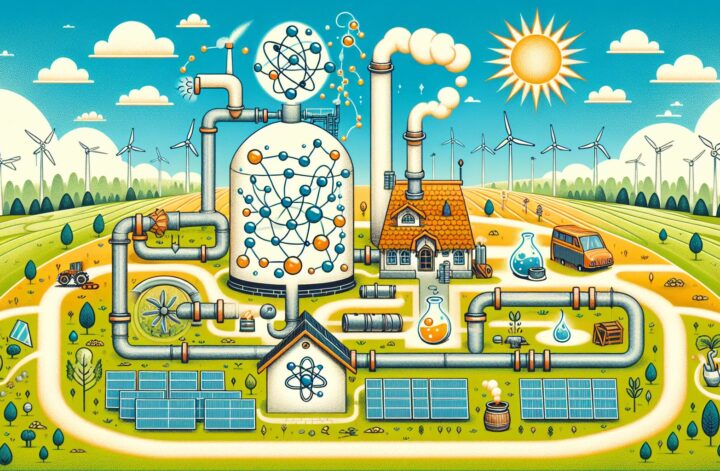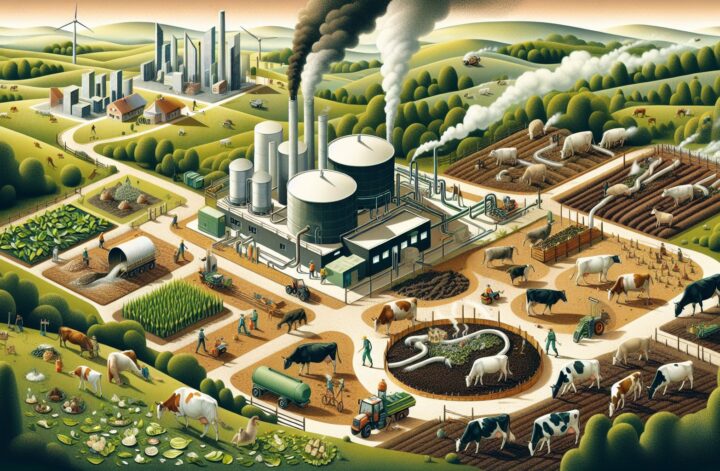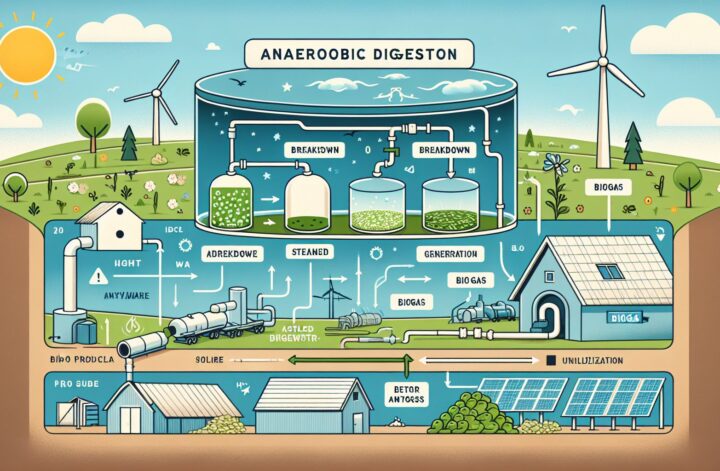The accelerating global energy demands have compelled scientists and industry players to explore novel and environmentally-sound methods of generating energy. One such method is anaerobic digestion, and more specifically, the co-digestion process, which has been successful in improving biogas production and moving us towards renewable energy effectively.
Here, we plunge into the world of co-digestion, exploring its mechanisms, benefits, and the potential it holds in promoting a more sustainable energy landscape.
What is Co-digestion?
Co-digestion refers to the simultaneous anaerobic digestion of multiple types of organic matter. In simple terms, it’s the process of digesting two or more types of organic waste together, producing biogas that can be used as a source of renewable energy.
It’s somewhat akin to blending various fruits to create a smoothie that’s more nutritious and flavoursome than any fruit taken alone. In the same vein, the co-digestion process amalgamates organic wastes, boosting biogas’ quality and quantity [1].
The Co-digestion Mechanism
The fact that co-digestion can optimize biogas production more effectively than single feed anaerobic digestion is attributable to the balanced nutrition of anaerobic microorganisms.
In the co-digestion process, bacteria break down organic matter in the absence of oxygen, producing biogas chiefly comprising methane and carbon dioxide. This process involves four main stages:
- Hydrolysis: Larger organic molecules are broken down into simpler molecules, such as sugars, amino acids, and fatty acids.
- Acidogenesis: These simpler molecules are further broken down into volatile fatty acids and alcohols.
- Acetogenesis: The volatile fatty acids and alcohols are now transformed into hydrogen, carbon dioxide, and acetic acid.
- Methanogenesis: The final phase where methane is produced by methanogens [2].
Different types of waste-materials bring different nutrients to the table, some having high carbon content while others are rich in nitrogen, maintaining a balanced C/N ratio which is beneficial to the bacteria, allowing them to function more efficiently and ensuring a higher biogas output.
Benefits of Co-digestion
Co-digestion brings a myriad of benefits to both the environment and industry:
- Waste Reduction: By breaking down multiple organic waste types simultaneously, co-digestion significantly reduces the volume of waste that would have otherwise ended up in landfills.
- Environmentally Friendly Energy: As biogas is produced from waste, co-digestion helps to create renewable energy, reducing reliance on fossil fuels and contributing to a greener earth.
- Cost-Effective: The co-digestion facilities can be integrated into existing infrastructures such as wastewater treatment plants, minimizing the initial investment costs [3].
- Balanced Biochemical Processes: Co-digested materials often yield a balanced nutritional profile for bacteria, supporting optimal biochemical processes and energy extraction.
Looking Forward: The Potential of Co-digestion
The success of the co-digestion process has opened up opportunities for advancing the renewable energy sector. Further research would enable developing more effective co-digester designs, more productive mixtures of waste, and improved methods of biogas extraction and utilization.
Innovative approaches to alleviating potential challenges, such as ammonia toxicity and sulfide toxicity, are also being explored, advancing the technology to become an even more powerful tool for biogas production and renewable energy generation.
Co-digestion represents a significant stride towards achieving energy sustainability and environmental conservation, promising an exciting prospect in future renewable energy narratives.
References
- Appels, L., Baeyens, J., Degrève, J., & Dewil, R. (2008). Principles and potential of the anaerobic digestion of waste-activated sludge. Progress in Energy and Combustion Science, 34(6), 755-781.
- Murto, M., Björnsson, L., & Mattiasson, B. (2004). Impact of food industrial waste on anaerobic co-digestion of sewage sludge and pig manure. Journal of Environmental Management, 70(2), 101-107.
- Moeller, J., & Stinner, W. (2009). Effects of different manure treatment technologies on greenhouse gas emissions. Advances in Agronomy, 100, 143-67.




